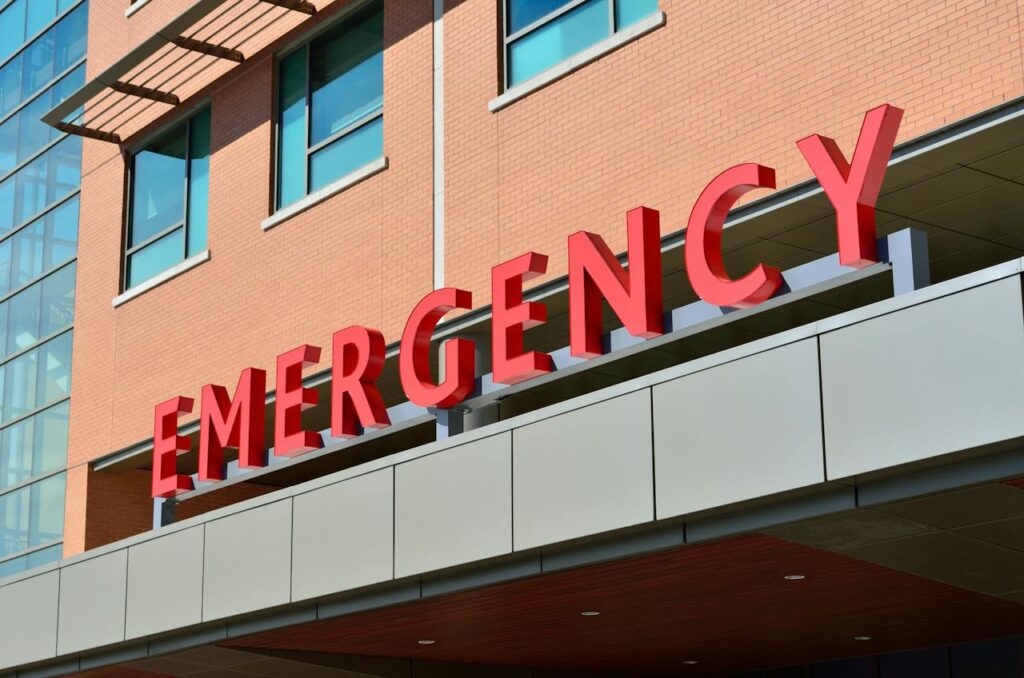
Emergency departments (EDs) are essential to the communities they serve and the hospitals they support. They provide exceptional and immediate care to patients. The ED is the most active and critical department of a hospital with a constant flow of incoming patients, many of which are very ill or critical.
It’s 24/7/365 work and the teams are trained to treat a variety of illnesses and injuries, ranging from treating dehydration, suturing cuts, caring for patients with strokes and heart attacks, and performing emergency lifesaving procedures.
Misconceptions about the ED are prevalent due to TV dramas, personal experiences, and a lack of understanding of the complex workings of emergency medicine. Addressing these misconceptions helps improve understanding of the vital role emergency departments play in providing life-saving care during critical situations.
Common Myths
- The ED is for non-urgent issues: One of the most widespread misconceptions is that the ED is a place to seek care for minor ailments, such as a common cold or minor cut. While the ED may seem more convenient than a primary care office or urgent care center, the ED is designed to handle critical and life-threatening emergencies. The ED’s focus is to prioritize patients with the most life or limb threatening need. Patients with less-acute illnesses and injuries may have extended wait times as opposed to if they sought care at a lower level of care (PCP office, urgent care).
- You are seen in the order you arrive: Care in an emergency room is prioritized to our patients who are the sickest and in need of treatment immediately. When a patient arrives at the ED and checks in, they will be called up and evaluated (triaged) by a medical professional. Most of the time this process includes a nurse and nurse practitioner or physician assistant. The patient will explain their symptoms and reason for being at the ED. While collecting this information the nurse will get vital signs (blood pressure, temperature, etc.) and a focused history of why the patient is there. Once the triage process is completed, patients will be placed in a room or in the waiting area, depending on the availability of beds and the seriousness of the injury or illness.
- Emergency care is always free: Many people believe that emergency care is entirely free, regardless of their insurance status. However, emergency care can be expensive, and patients are usually responsible for co-pays, deductibles, and other out-of-pocket costs. While cost should be the last thing on your mind in an emergency, it’s something to consider if you’re seeking care for a non-emergent illness or injury.
- Patients can come to the ER to avoid insurance prior authorizations to get ancillary testing completed: When patients present to the emergency department the health care team reviews prior health care records, as they are accessible and as time allows due to the patient’s condition. Independent evaluation, assessment, and test orders are made by the physician and/or certified physician assistant or certified nurse practitioner based upon each patient’s critical need and appropriateness. Ancillary testing may be ordered by a physician in follow-up to an office visit. Upon arriving at the emergency department, a treatment plan will be developed and determine what testing is medically appropriate but non-emergently needed during the ER visit.
- EDs are independent from the rest of the hospital: The emergency department is an integral part of the hospital and the “front door” to many hospitals. Staff in emergency services are closely connected to all hospital services. Emergency medicine often relies on a collaborative, team-based approach to care with staff from imaging, laboratory, pharmacy, behavioral health, social work, and pastoral care. Once a patient is stabilized, this team helps determine the plan of care for the patient which may mean they are discharged from the ED, observed, admitted to the hospital, or transferred to a facility with services the patient needs for recovery.
- The ED is a chaotic environment: Emergency departments can be chaotic and high-stress environments due to the unpredictable nature of emergencies and patient influx, but it’s often nowhere near like that which is portrayed on TV and in the movies. Despite the chaos, staff work tirelessly to provide the best care under demanding conditions and are the calm in the storm our patients look to in their time of need.
In an Emergency, Don’t Delay
If you are not sure what to do, and you’re not experiencing signs and symptoms of a serious health condition, call your primary care provider. If the office is not open, your phone call may be forwarded to a health care professional. Describe your symptoms to the provider who answers your call and find out what you should do. If you’re not able to reach someone at your primary care office, seek care at a local urgent care site or check with your health plan to see if virtual care may be available.
If it’s a health emergency, think emergency department. If you are ever experiencing symptoms of a potentially life-threatening condition, such as a stroke, trauma, or heart attack, dial 9-1-1, or go directly to the closest emergency department. Time matters and your nearest ED is equipped to stabilize and treat your condition while determining the next steps for your care journey.
Robert Strony, D.O., is with UPMC Emergency Medicine in North Central Pa. To learn more about emergency services, UPMC.com/NorthCentralPa.


